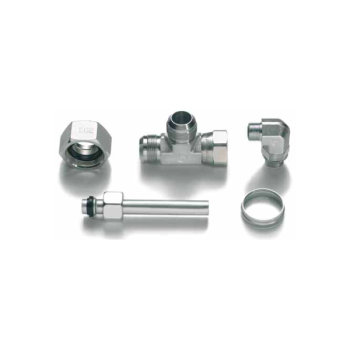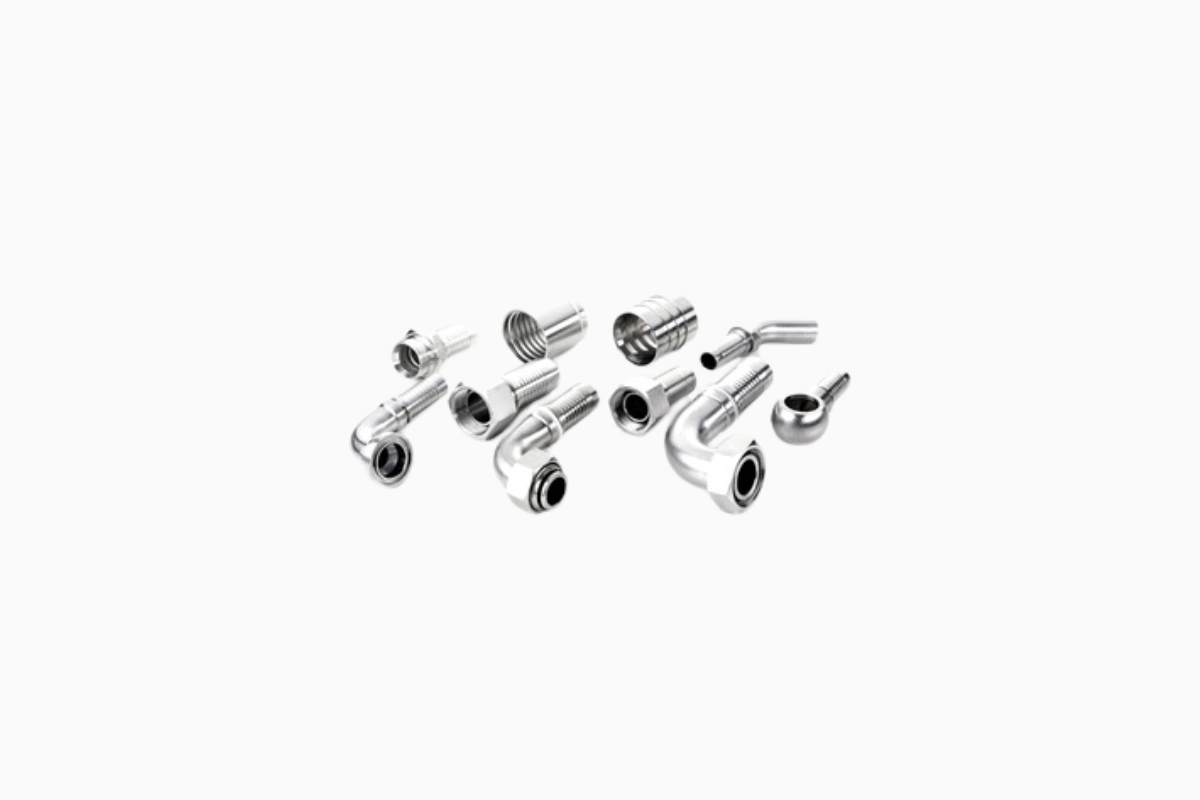Hydraulic fittings are essential components in hydraulic systems, used to connect pipes, valves, and other devices that make up a hydraulic circuit. Their primary function is to ensure a safe and reliable connection, preventing fluid leaks and maintaining the internal pressure required for the system to operate. But what exactly are hydraulic fittings, and how do they work?
Types of Hydraulic Fittings
Hydraulic fittings can be categorized in different ways based on their shape, connection methods, and application type. Among the most common types are:
- Threaded Fittings: These are among the most widely used, featuring threads that screw together or onto other components. There are NPT, BSP, and metric threads, varying based on technical requirements and system standards.
- Compression Fittings: Used in applications requiring a very tight connection, these fittings work by compressing a seal or a gasket between two surfaces. They are ideal for preventing pressure loss, even in high-stress situations.
- Quick-Connect Fittings: These fittings allow for quick connection and disconnection without tools, making them perfect for situations requiring frequent maintenance. The quick-connect feature enables easy separation of components without compromising efficiency.
These categories of hydraulic fittings are chosen based on the specific needs of the application. For a full selection of hydraulic fittings, visit the LubeTeam hydraulic fittings page.

The Role of Hydraulic Fittings in Systems
Hydraulic fittings are designed to seal fluids and enable the hydraulic system to operate efficiently and safely. Selecting the right fitting is crucial to maintaining pressure, minimizing leak risks, and preventing damage to internal components. In a hydraulic system, fluid is pressurized and pushed through pipes to generate movement or force, and a quality fitting ensures the fluid remains confined within the circuit.
One of the main aspects to consider when choosing a fitting is its compatibility with the fluid used, as certain materials may react with the hydraulic fluid, leading to corrosion and premature wear. For example, fittings made of stainless steel or brass are particularly corrosion-resistant and suitable for aggressive fluids, while synthetic materials can be lighter and more resilient for specific applications.
Materials and Applications of Fittings
Hydraulic fittings can be made from various materials, each with specific characteristics that make them ideal for different applications. For instance, stainless steel is highly corrosion-resistant and can withstand high pressures, making it perfect for harsh environments or situations where the fitting needs to handle extreme stress.
Brass, on the other hand, is an excellent choice for hydraulic systems that use less aggressive fluids. This material is valued for its durability and strength, offering an ideal balance between cost and performance.
Lastly, synthetic materials are particularly useful in applications where lightweight fittings are required, such as in the aerospace and automotive industries. These fittings are designed to withstand extreme temperatures and provide excellent flexibility, making them a versatile choice across many sectors.
Hydraulic fittings find applications across a wide range of industries, from construction to agriculture and manufacturing. In each of these sectors, hydraulic fittings play a crucial role in maintaining the integrity of fluid transport systems, improving efficiency, and reducing maintenance times.

